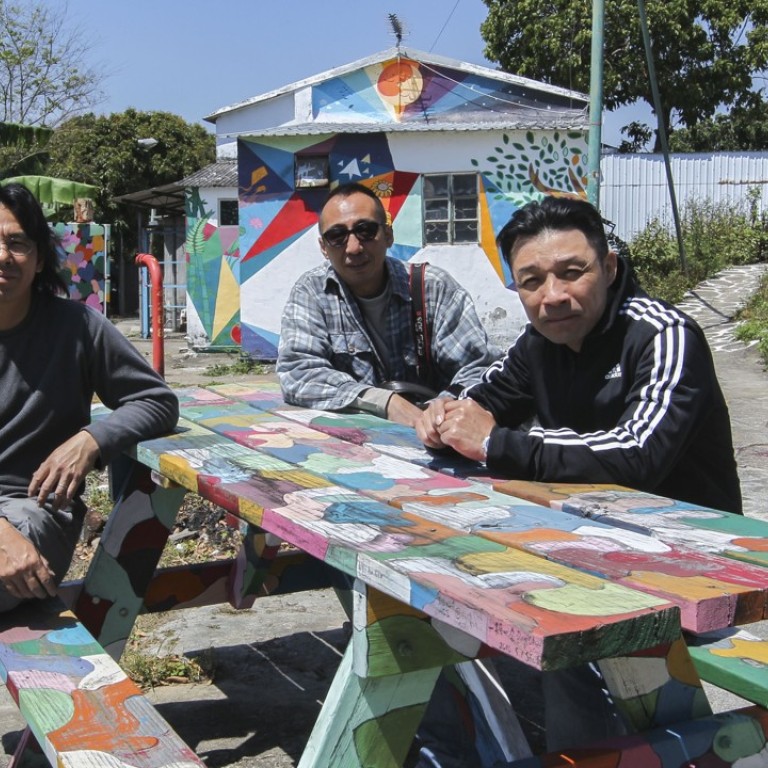
Is this mural village the last stand against Hong Kong’s rapid urbanisation?
Inspired by Taiwan’s ‘Rainbow Village’, New Territories residents campaign to preserve city’s rural past, not with loudspeakers or banners, but with paintbrushes
Among a sprawl of abandoned farmland and scrapyards on Hong Kong’s last untouched frontier lies a cluster of idyllic, rainbow-coloured village houses.
Ping Yeung San Tsuen in the New Territories, which was in the government’s cross hairs for development more than six years ago, once again faces being bulldozed.
But instead of marching with banners and loudspeakers to save their homes from being razed to the ground, villagers are arming themselves with paintbrushes.
Yuen Ka-keung, one of the residents who started the campaign in 2013, said hundreds of university students and volunteers had helped bring the village to life by painting murals on houses and along paths.
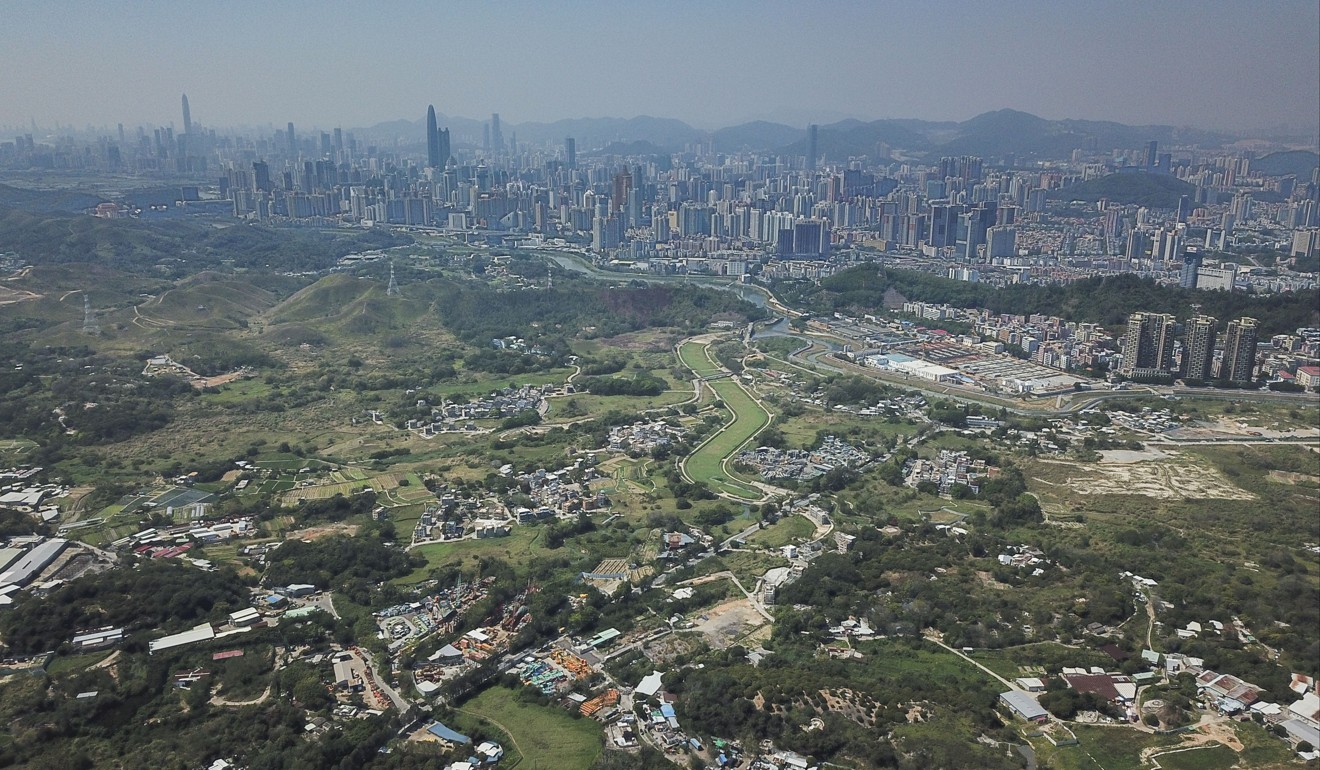
“We took inspiration from a popular mural village in Taiwan. It became a sort of ‘soft protest’ against the government to stop development plans,” Yuen said, referring to a settlement known as “Rainbow Village” in the city of Taichung in central Taiwan.
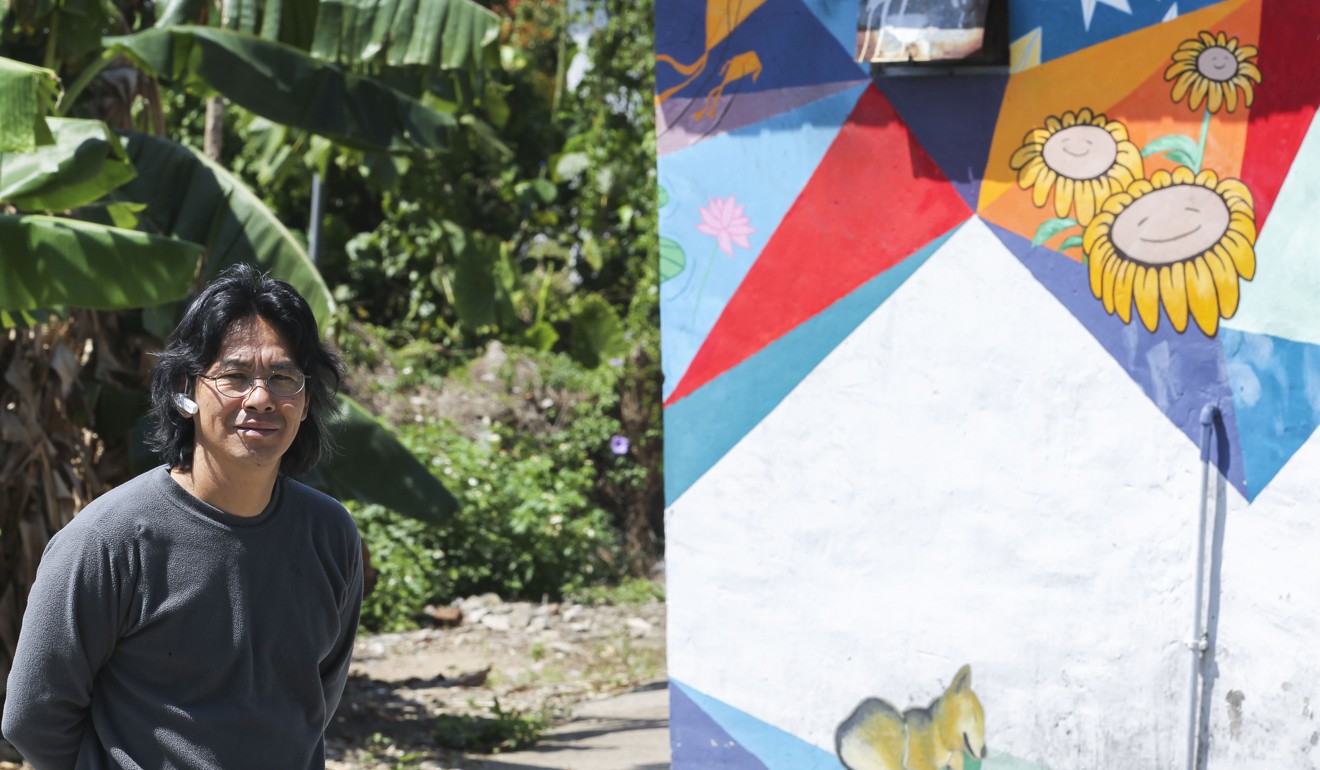
Once a temporary settlement for army veterans, the Taiwanese village was slated for redevelopment until one man, its sole resident, began decorating the place with vibrant murals. When university students discovered the works and posted photos online, the images went viral and “Rainbow Village” transformed into a tourist destination, forcing authorities to back down.
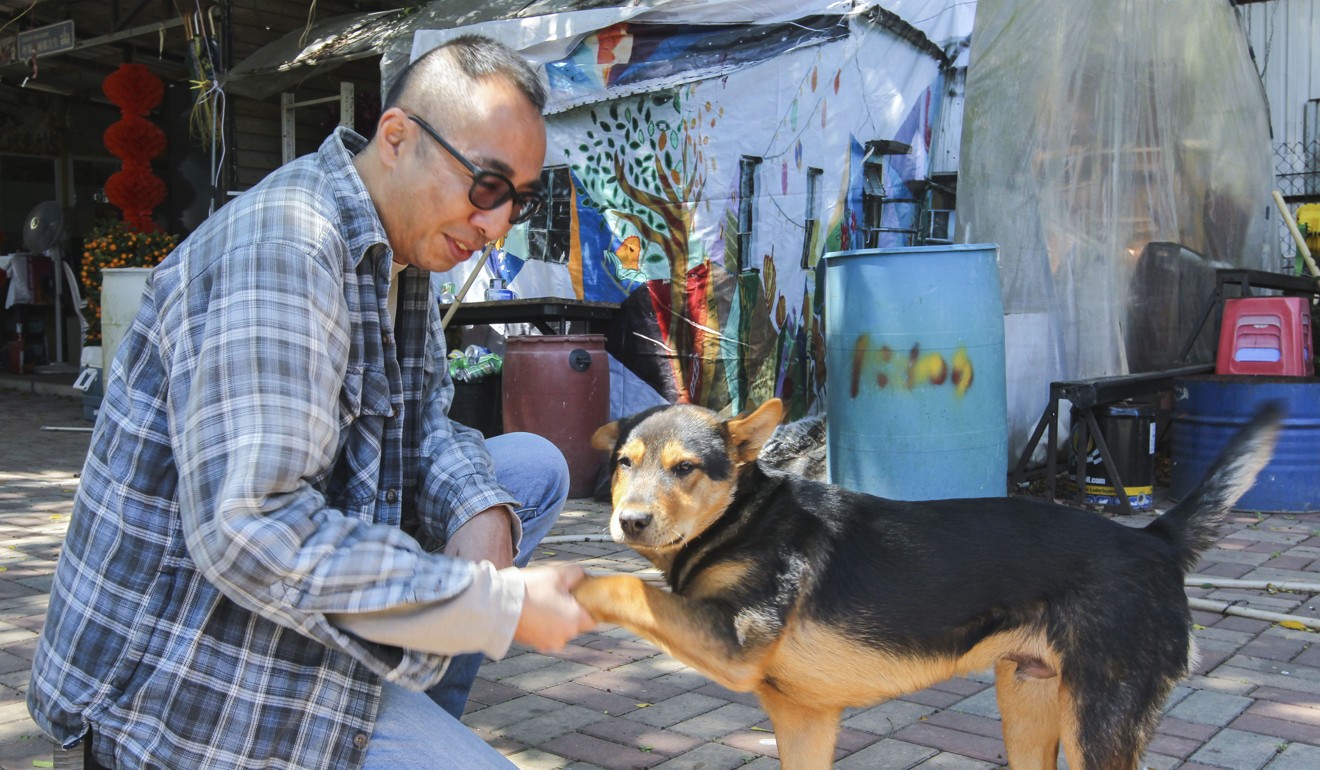
As for Yuen’s cause in Hong Kong, he said it was not about turning his village – now dubbed “Ping Che mural village” – into a tourist destination, but about educating people and promoting creativity.
We want people to know that Hong Kong still has villages
“We want people to know that Hong Kong still has villages. Most people in the city grew up in skyscrapers, but making this a mural village is one way of bringing people here to show what New Territories villages are like, before they are gone,” he said.
The village is home to some 300 people and in 2008 was included in a government project to build a new town in Northeast New Territories, along with neighbouring Kwu Tung and Fanling North.
But in a surprise U-turn, authorities in 2013 decided to postpone the development of a number of villages in the larger Ping Che-Ta Kwu Ling area – including Ping Yeung San Tsuen – and set them in a separate study.
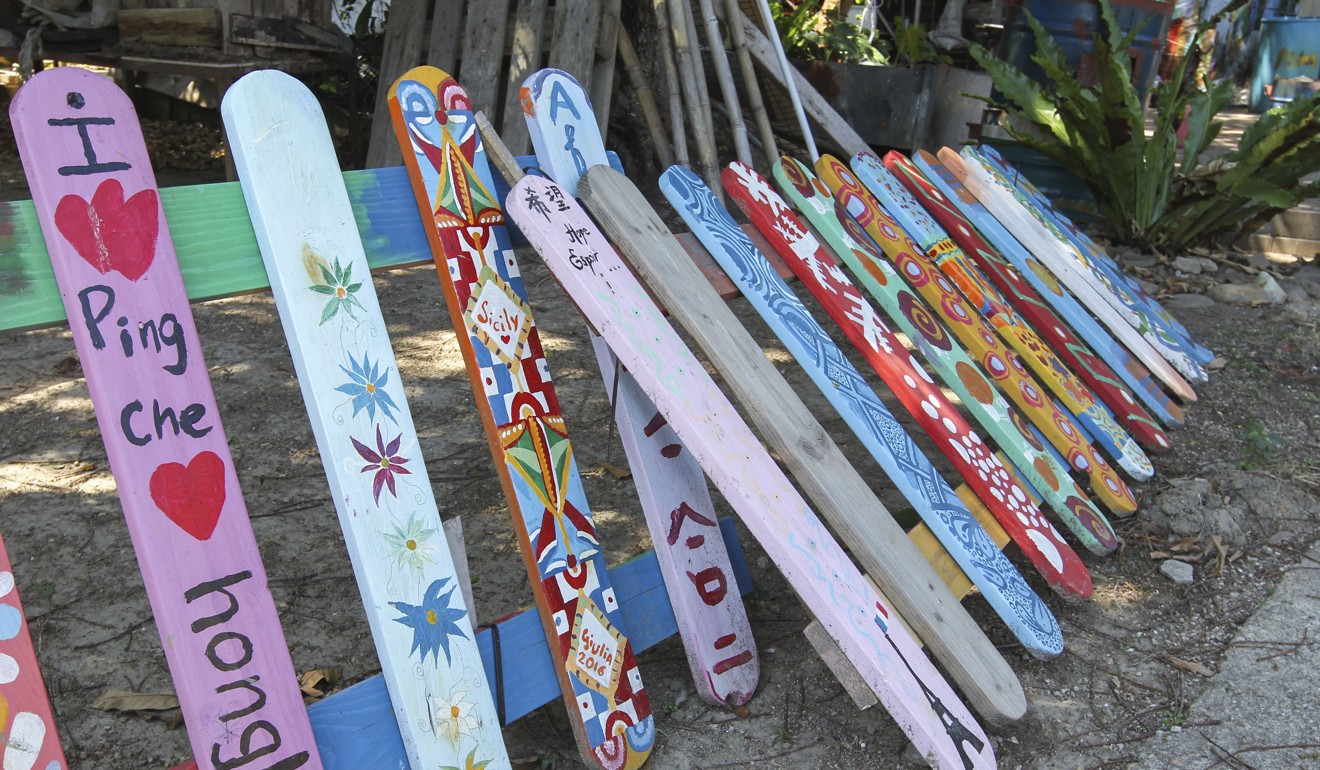
About five years later, in February, the government released the preliminary findings of the study to develop a larger area of 5,300 hectares (13,100 acres) in the northern New Territories into a new town.
Hong Kong villagers go on bended knee to protest against government housing plan
The whole area could provide homes for up to 350,000 people and generate up to 215,000 jobs, the study suggested. The project could take between 22 and 26 years to complete if officials proceed with the plan.
The study has also given momentum for villagers to go beyond just mural painting to raise awareness.
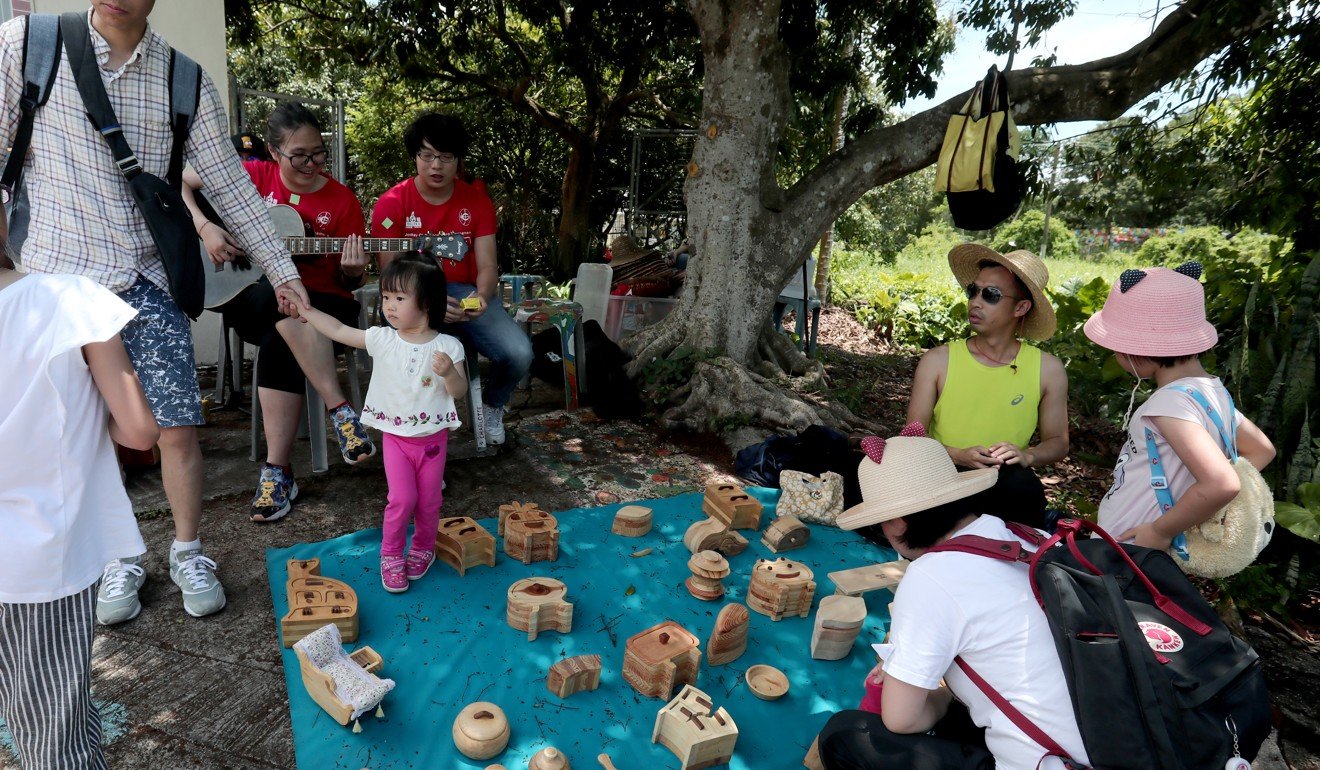
Saving Our Home Alliance, a local village concern group that took part in previous protests, organises farmers’ markets, theatre performances, guided tours and traditional fire dragon dance parades in the hope of ensuring the village’s survival.
Alliance member John Choy Yuk-wai said the group’s work did not stop “just because now there are no protests”.
How Hong Kong’s New Territories villagers can help the city become more liveable
“Our philosophy behind all of this is to increase the value of this place, raise public awareness about villages and to build a community,” he said.
On the first Sunday of each month, the alliance sets up a farmers’ market selling handicraft items and all manner of local organic produce – from home-made soybean milk to soaps.

Social worker Deborah Bow said she came to see the mural village and get some fresh air but was surprised to stumble upon the market.
“Hong Kong already has too much city,” she said. “It would be a shame to lose this too.”

